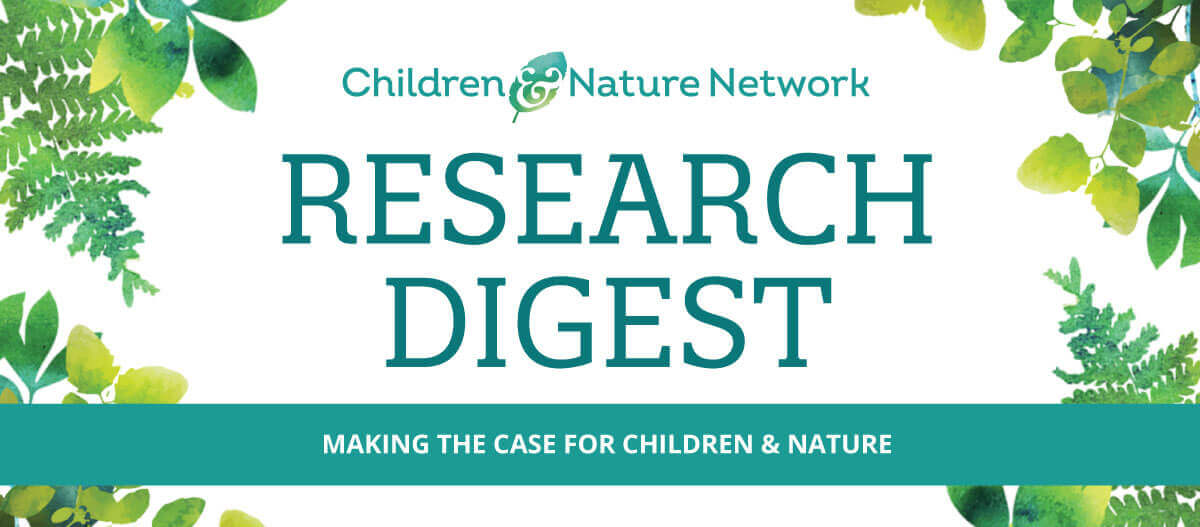Disparities in Playspace Availability, Access and Quality
Research points to the limited availability of playspaces in lower socio-economic status neighborhoods, as well as racially and ethnically diverse neighborhoods. In some communities, the proximity of playspaces may be equitable, but the quality of these spaces is diminished, restricting children’s opportunities for play. Adverse conditions, especially safety issues, may further hinder children and parents in low-income communities and/or communities of color from visiting parks and other outdoor playspaces.
National study links neighborhood park inequities to children’s physical and mental health disparities
Analysis of data from the U.S. Census Bureau’s 2016 National Survey of Children’s Health showed that urban African American children were more likely than white, non-Hispanic children to lack neighborhood parks. Children in non-urban locations or below the federal poverty level also had higher odds of not having a park in their neighborhood. Findings also revealed that children lacking neighborhood parks were more likely to have an ADHD diagnosis, be overweight or obese, and demonstrate poor health behaviors.
Reuben et al., 2020. Association of neighborhood parks with child health in the United States.
Access Study
Access to urban parks may be limited by park crime and congestion
An investigation of park equity in Hartford, Connecticut found that parks were equitably distributed in relation to race, income and education. However, inequities were associated with park congestion and park crime. Higher median house value was related to less park crowdedness, while some neighborhoods showed more park crime disparities with respect to race, education, and income. The study provides a framework for measuring park equity through assessment of park proximity, congestion and crime.
Zhang & Park, 2023. Investigating spatial heterogeneity of park inequity using three access measures: A case study in Hartford, Connecticut.
Access Study
A regional park equity analysis revealed disparities in park access and specific features related to park quality
Researchers in an urban region of the Southeastern U.S. examined potential inequities in park availability and quality in relation to neighborhood sociodemographic factors. While results indicated that high poverty areas had more parks, some disparities were found relating to park transportation access, aesthetics and amenity availability. Findings highlight the need for more detailed research to explore the association between neighborhood sociodemographic factors, park availability and park quality.
Hallum et al., 2024. Unearthing inequities in the relationship between multiple sociodemographic factors and diverse elements of park availability and quality in a major southern metropolitan region.
Access Study
Certain racial/ethnic groups have fewer public transportation options to large parks in the Western U.S. than other groups
Researchers used a novel measure of public transit access to parks to determine the number of large parks that residents in the 15 largest metropolitan areas in the Western U.S. can access by public transit or walking. Relating those results to neighborhood-level disadvantage provided some evidence of environmental injustice, with BIPOC communities having both worse walking and transit access to large parks compared to non-Hispanic white people.
Park et al., 2021. Transit to parks: An environmental justice study of transit access to large parks in the U.S. West.
Access Study
Major U.S. cities have significantly less street greenery in racial/ethnic minority and low-income neighborhoods than other neighborhoods
This study considered green spaces of different sizes, from street greenery to parks, in its examination of sociodemographic differences in access to green spaces in 12 U.S. cities. Results showed “a complex picture of inequality.” While both just and unjust distributions of green space were identified, injustices regarding street greenery were most prevalent. Findings suggest that the populations who need environmental amenities the most may not have just access to green space in major cities.
Choi, Park & Rigolon, 2020. From XS to XL urban nature: Examining access to different types of green space using a ‘just sustainabilities’ framework.
Access Study
Study in Hong Kong identifies issues related to distributional justice with respect to parks in a high-density city
Assessment of the quality of 102 parks in Hong Kong indicated that deprived areas tended to have more active facilities and supporting amenities within parks than economically advantaged areas. These results reflect current policies designed to improve equity in parks. However, communities with higher percentages of ethnic minorities tended to have parks with fewer active facilities and less diversity of active facilities and supporting amenities than parks with a lower percentage of ethnic minorities.
Zhang et al., 2021. The neighborhood socioeconomic inequalities in urban parks in a high-density city: An environmental justice perspective.
Access Study





